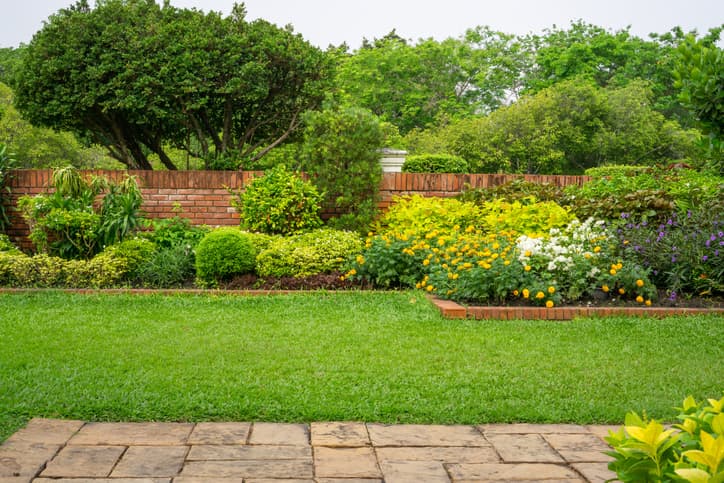Most landscaping is done to beautify the terrain around your home. However, functionality is sometimes just as important. French drains create a resistance-free path for water to follow rather than build up. A French drain system might be crucial to the structural stability of your property in terms of letting water go away instead of causing problems. Working with someone that can install French drain systems might spare you a lot of future headaches.
What Is the Purpose of a French Drain?
Don’t let the “French” part of French drain throw you for a loop. These aren’t high-culture or sophisticated things often associated with France, be it perfume or pastries.
In short, a French drain is an underground ditch that has an inset perforated pipe under a layer of gravel. The purpose of the pipe is to funnel rainwater away from your home’s foundation to somewhere else that’s safer for it to be. That might be a municipal stormwater drain or even a rain barrel.
How Does a French Drain Work?
A French drain should be an easy path for water to follow. It will go down into your trench or ditch filled with gravel before entering the perforated pipe underneath. Water should flow through that pipe freely before emptying safely away from your home.
If you want the water to flow properly in your chosen direction, then your trench bottom needs to slope downward approximately 1 inch every 8 feet in trench length. This makes gravity do the work for you without anything mechanical or electrical in terms of pumping.
Based on your property, you might be able to divert the water to many different places, including:
- The street you’re on
- A dry well
- An available drainage ditch
- Part of your property that is low-lying
Larkin Plumbing can handle your toughest plumbing problems. Contact us today for quick service and expert advice.
When Do You Need a French Drain?
Specific sets of circumstances dictate a French drain might be appropriate, these include:
- You have water in your basement frequently or when it rains
- You build a retaining wall on any hillside
- Your property has damp spots such as a soggy lawn or even a driveway prone to washing out
What Do You Need to Install a French Drain?
Installing a French drain isn’t very complicated. For a basic version, you only need a few things:
- A shovel to dig out the trench and dirt
- The perforated pipe for the bottom
- A tape measure and level to ensure the slope
- Gravel to fill the trench
- Geotextile drainage fabric that is non-woven to line the entire trench with
What Are Common French Drain Mistakes?
There are six common issues with homeowners trying to build French drains on their own that you should avoid:
- Not calling before you dig: Failing to do this might mean you hit underground utility lines and cause an even bigger problem than the one you are trying to fix.
- Using rock that’s too small: Aim for 1.5-inch rocks that are clean and round. Anything smaller might compact in the bottom of the drain and clog up the whole affair.
- Overestimating your own capacity: There are plenty of tutorial videos online that you can follow to build your own French drain. Just make sure you don’t bite off more than you can chew. Consider using a professional service just to be safe.
- Replacing excavated soil back in place: You’ll have to dig up soil to make room for the drain but you don’t want to put it right back in place when you’re done. It obviously wasn’t draining well enough to start with.
- Ending the trench wrong: The trench needs to end at a location that doesn’t just swap one flood for another.
- Directly connecting your downspout: Doing this might mean leaves and debris clog your French drain.
Key Takeaways
A French drain is a simple solution to preventing flooding and dampness in certain parts of your yard and property, including your home’s basement and foundation. The whole concept is simple enough that you might be able to construct one yourself, but you can also hire professionals to do precision work that proves effective. Since French drains are ultimately underground, they can preserve the stability of your yard without detracting from its beauty.

